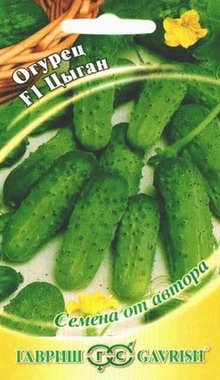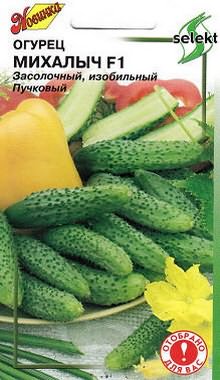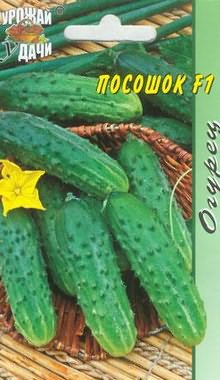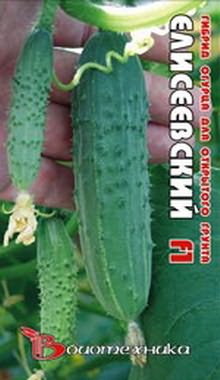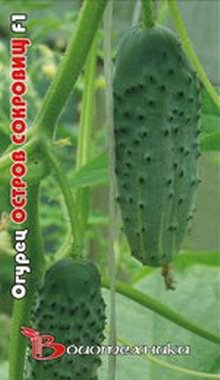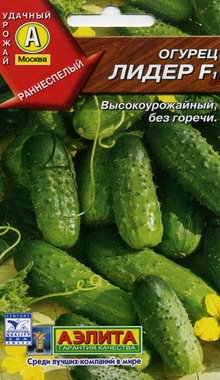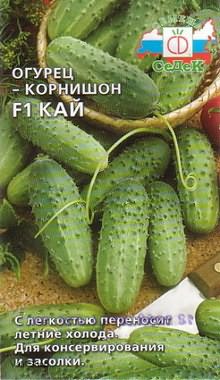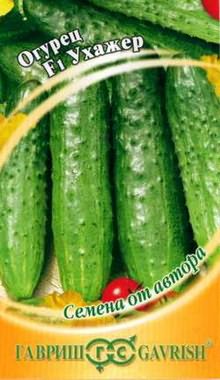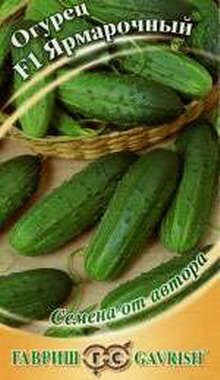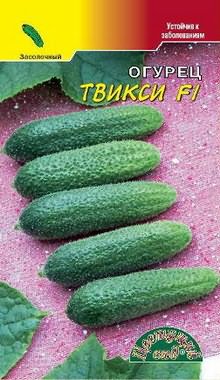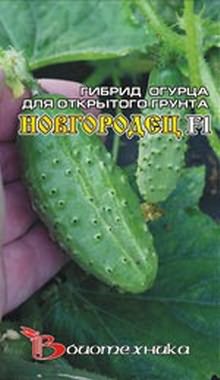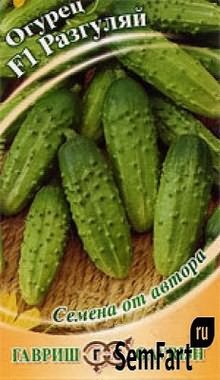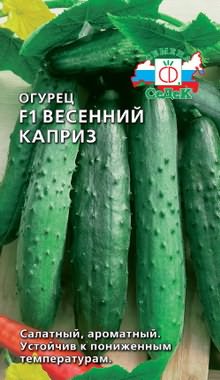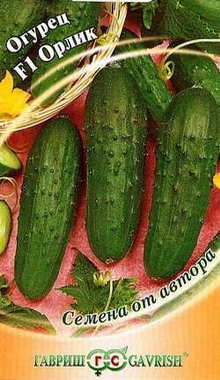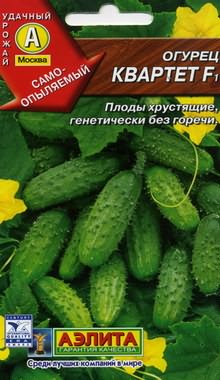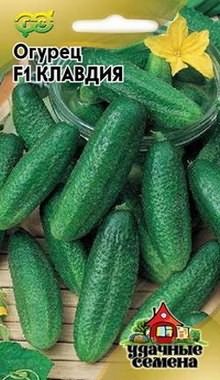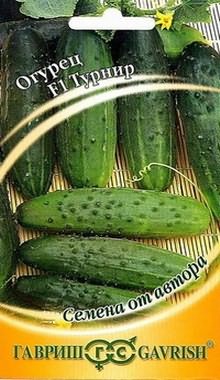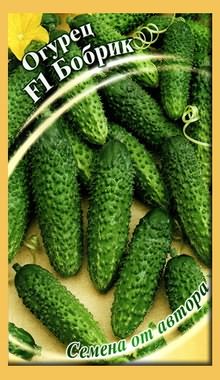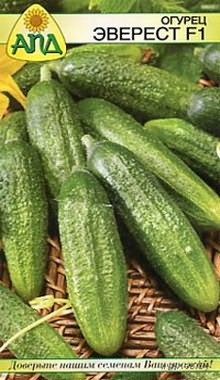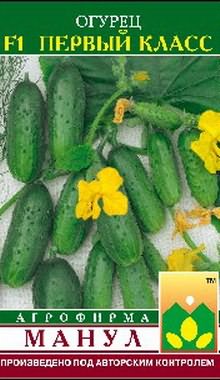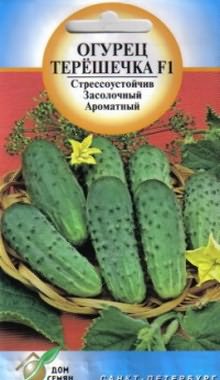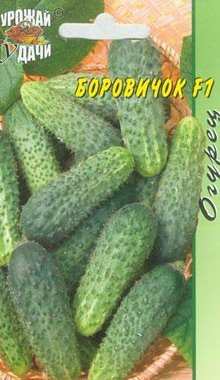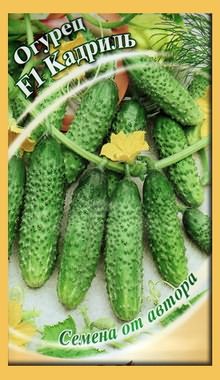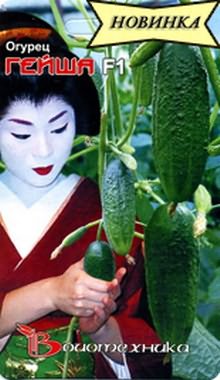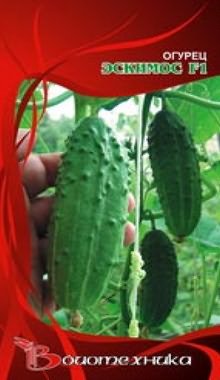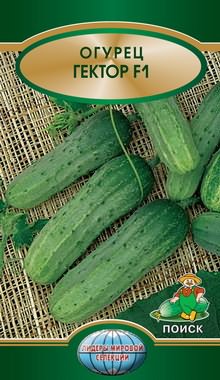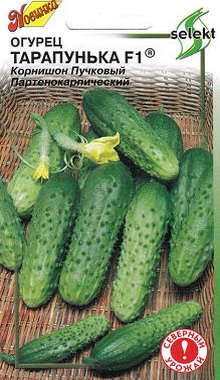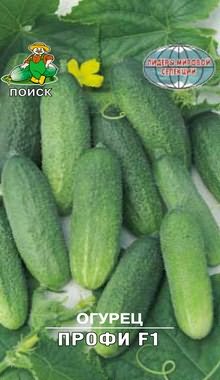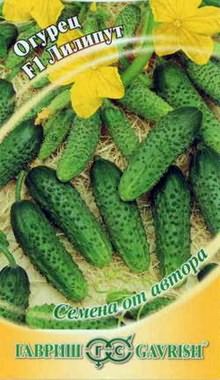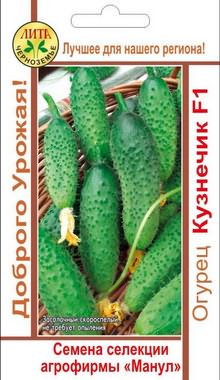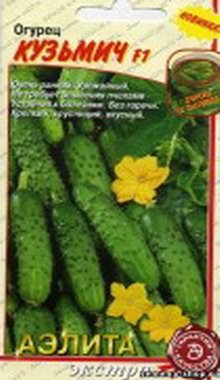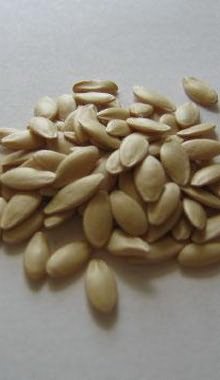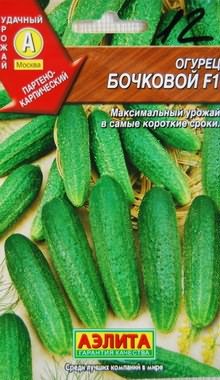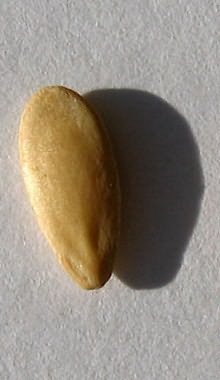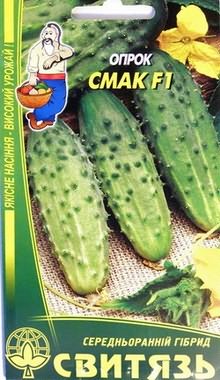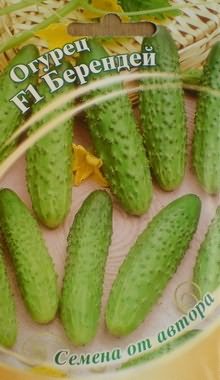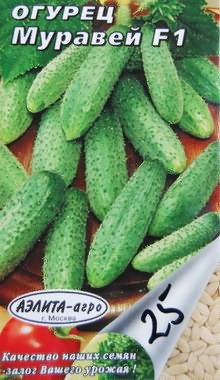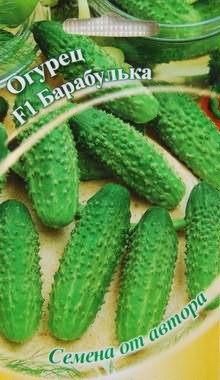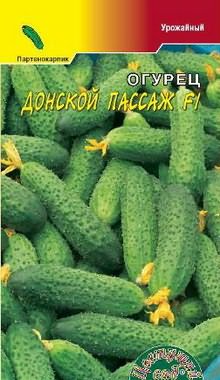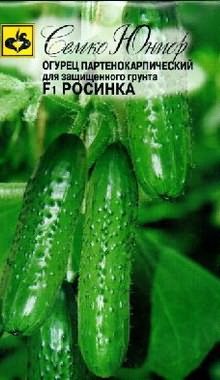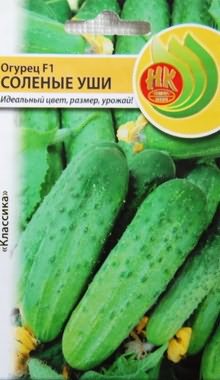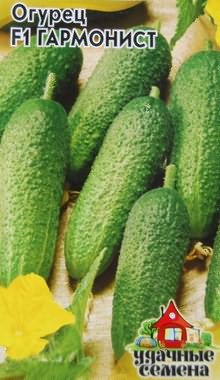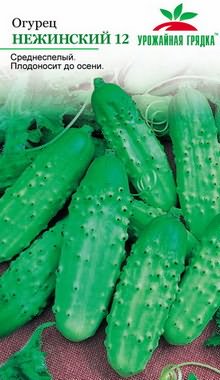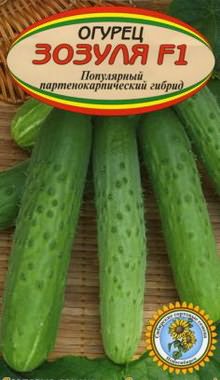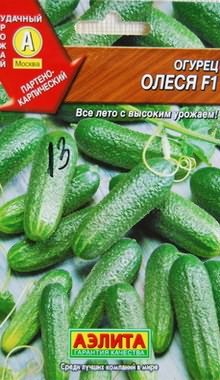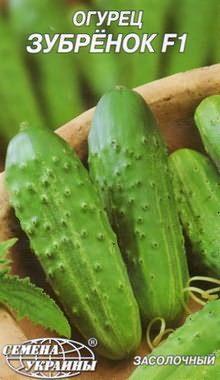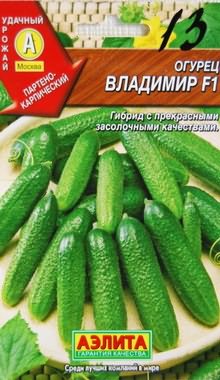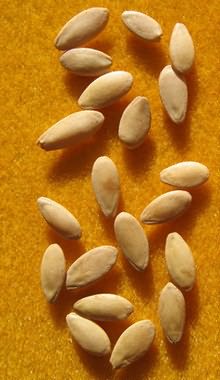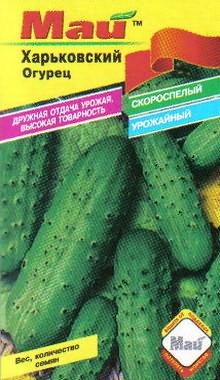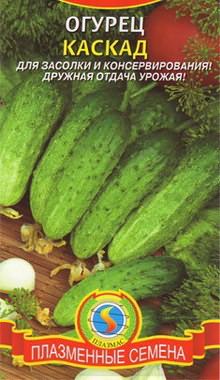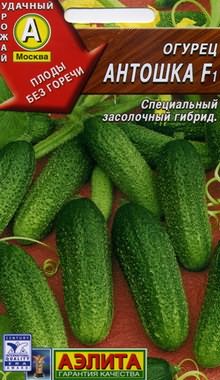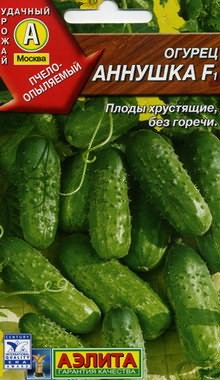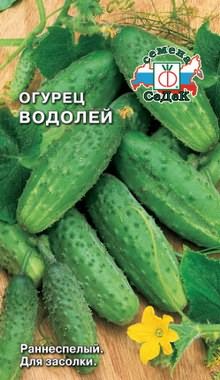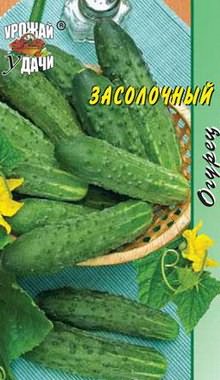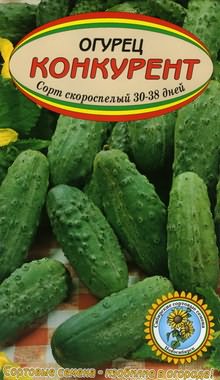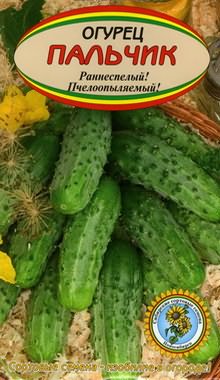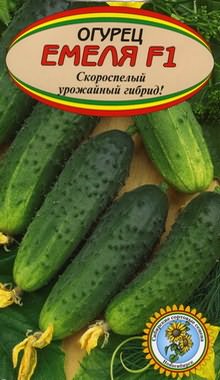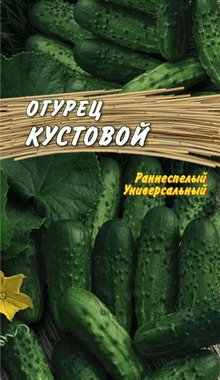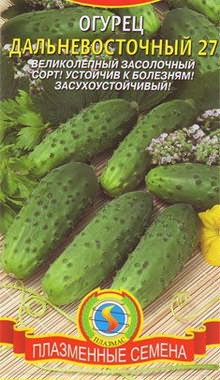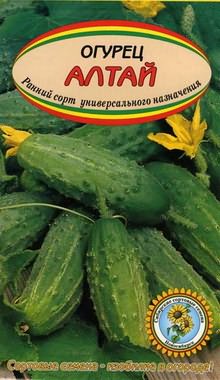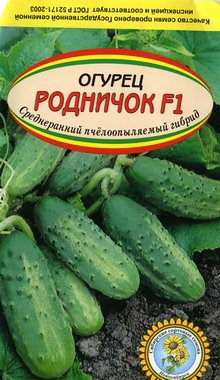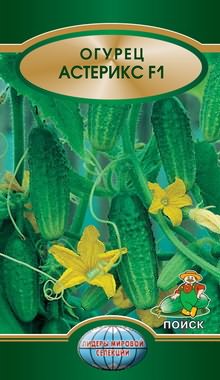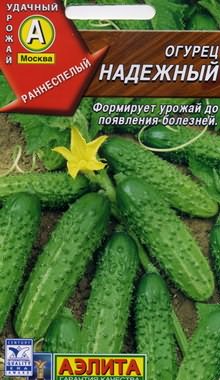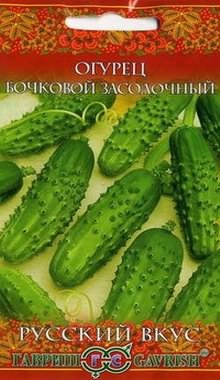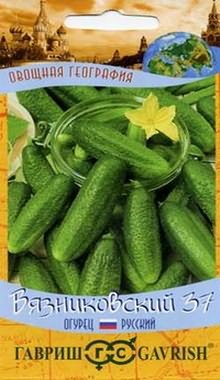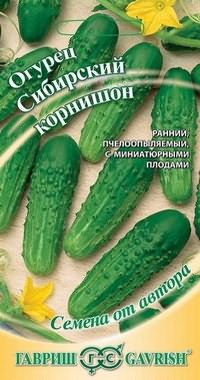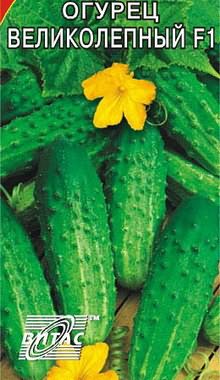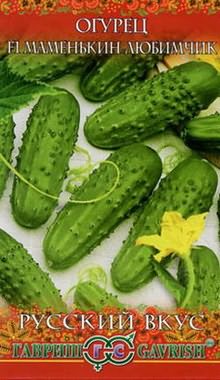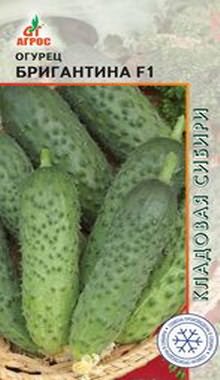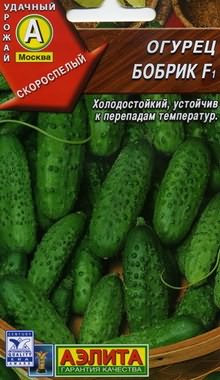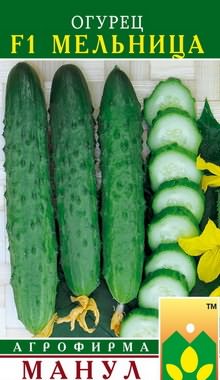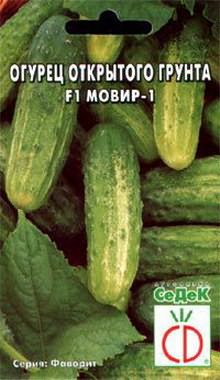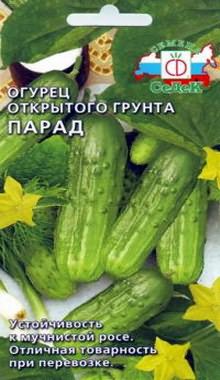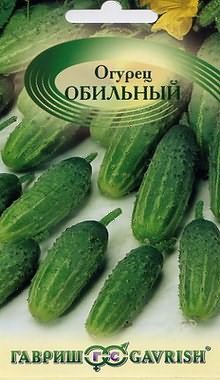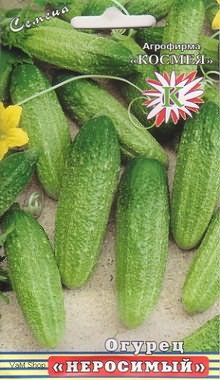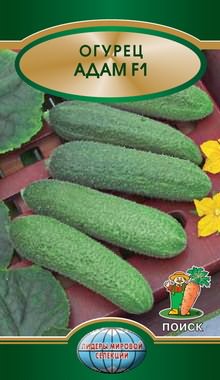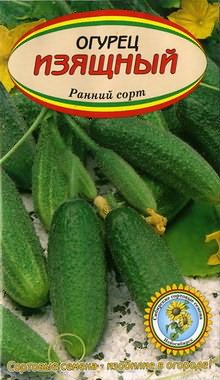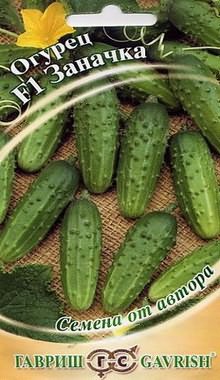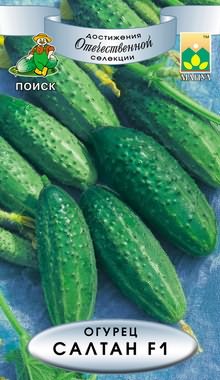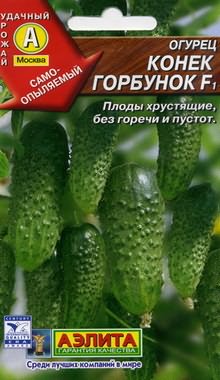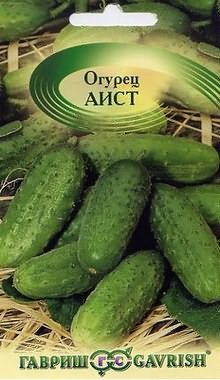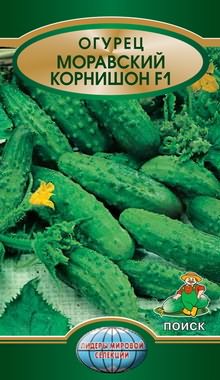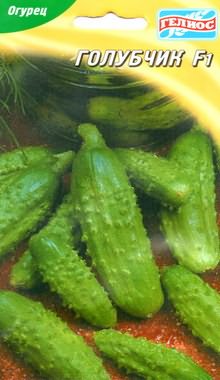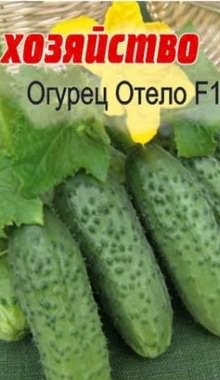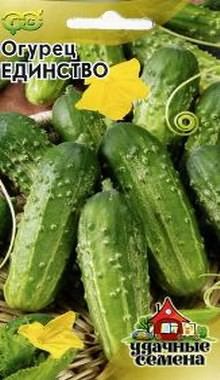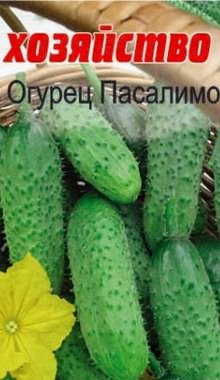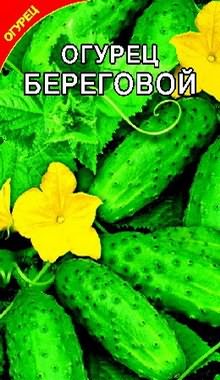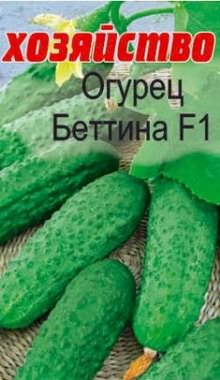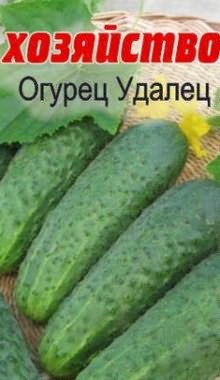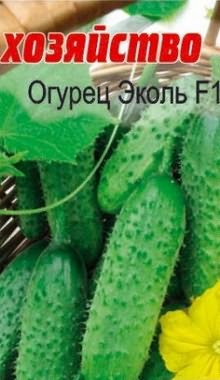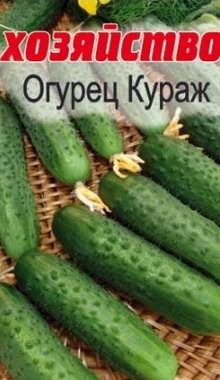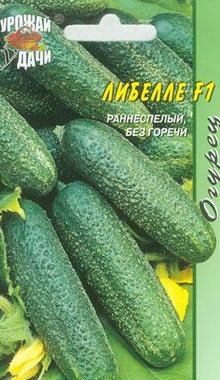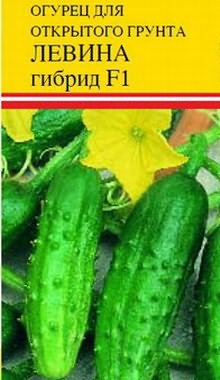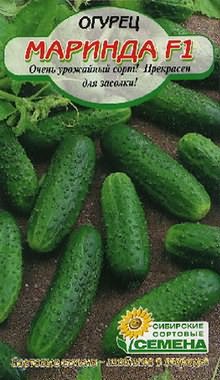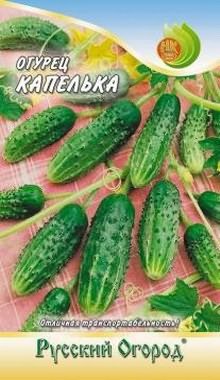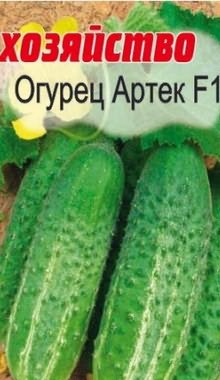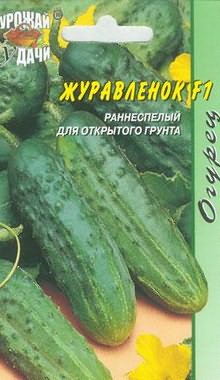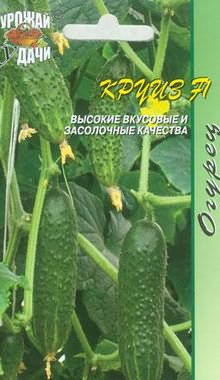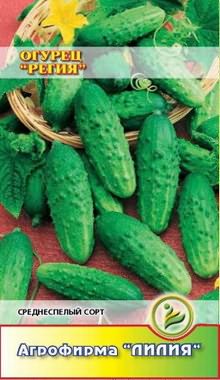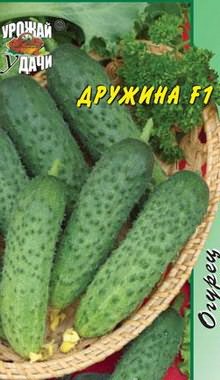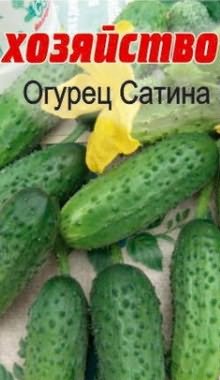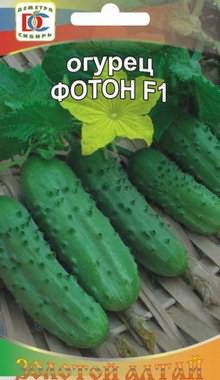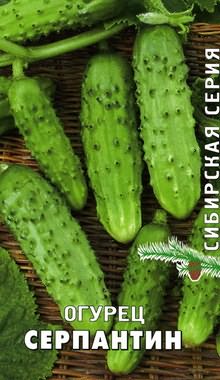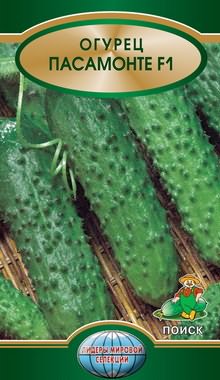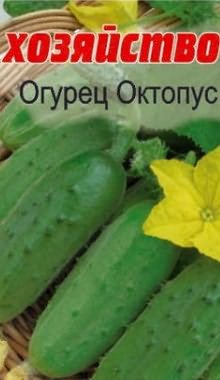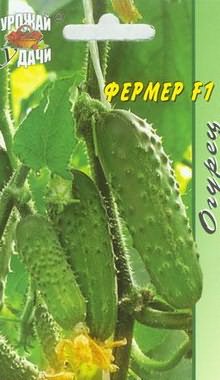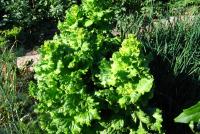Early cucumbers: the right choice of variety. The best varieties of early cucumbers
The most common vegetable is cucumber. Agrotechnics of its cultivation is quite simple, you just need to know some of its tricks. Breeders deduced a huge number of cucumber varieties, confined to the climatic conditions of any locality. In this variety and abundance of varieties is very difficult to navigate and decide in the choice.
Characteristics of varieties for open ground
Having decided all the same to engage in the cultivation of cucumbers, it is necessary to study in detail the necessary conditions for the growth of the selected variety. All the variety of cucumber hybrids breeders are divided into two main types:
- Grown under conditions open ground
- Grown in greenhouse conditions
Therefore, before planting the selected variety, one should make sure that the plants are suitable for growing under the existing conditions. These subtleties directly affect the yield of the plant and its taste. The correctly selected variety can give a good harvest in the conditions of the north of the country.
Most of our fellow citizens grow these plants in open ground conditions. In this article we will try to tell about the varieties of cucumber, dedicated to growing in such conditions.
Before you engage in the cultivation of cucumbers in the open field should be familiar with many of their characteristic features.
First, if you decide to grow early varieties cucumbers, you should know that this category of plants is more susceptible to disease than for example late varieties. In addition, the term of fruiting in early cucumber varieties is somewhat shorter than in later ones. The advantage of early varieties of open ground is the early collection of the long-awaited harvest.
Proper selection of varieties for the conditions of the area will protect cucumber plants from many diseases that can affect cucumber plants zoned to the conditions of the middle zone of our country.
The most common such diseases are:
- Different manifestations of bacteriosis
- Mealy dew
An important feature affecting the growth and yield of open-field cucumber culture is the soil structure selected under the hole. Usually, cucumbers are planted on friable and sun-warmed soils containing some fertilizer.
If you decide to plant cucumbers on virgin soil, you should take care of:
- The necessary cultivation of the soil, otherwise all lashes will often be overgrown with weeds.
- Before sowing, the selected area should be well fertilized, with the calculation of one bucket of manure per site of one square meter.
- Cucumber plants are best planted after such predecessors as cabbage, onions or tomatoes.
Cucumber plants are grown and seedling method, and the method of direct planting of seeds in open ground. In the conditions of open ground, the seedling method will help to obtain early harvest.
Planting cucumber plants directly into the open beds is carried out from the twenty-fifth of May dry seeds. If the seeds are pre-germinated, they are best planted in open ground since early summer, when the soil warms up for sure.
With the onset of the active vegetation period in cucumber plants, they should be fed once a two-week period with the following composition: about ten grams of ammonium nitrate is added to one liter of mullein.
Another way of feeding cucumbers based on the dissolution of urea in ten liters of water. Feed consumption is calculated on the basis of the ratio: from two to three liters per square meter of land. With the onset of fruiting, this rate of feeding is increased. Pre-watered the wells to ensure the best penetration of the fertilizer solution into the soil. The dropped drops of the prepared top dressing wash off from leaves abundant watering.
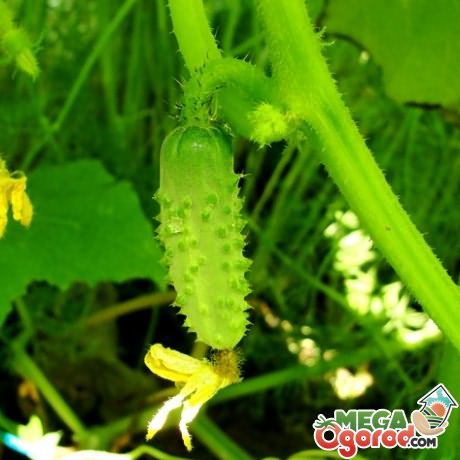
All cultivated cucumber varieties adapted for cultivation in the open ground by breeders are conventionally divided into the following groups: self-pollinated, gherkins, early and Dutch. Consider each group in more detail.
Self-pollinated cucumber varieties for the implementation of the pollination process do not require the presence of bees or any other insects on the site. After self-pollination of such plants, as a rule, there is a bountiful harvest of fruits.
Cucumbers obtained from such plants are characterized by the almost complete absence of bitterness. They are well tolerated by unforeseen climatic anomalies, which are not characteristic of the summer of our region of Russia. Moreover, self-pollinated cucumber plants are practically not affected by diseases.
Today, these varieties are grown in agriculture, where the number of natural pollinators is reduced. Self-pollinated cucumber varieties for open ground are resistant to temperature changes occurring during the flowering period of plants.
The most common varieties of self-pollinated cucumber plants are as follows:
- Orpheus - is the perfect variety for growing in middle lane Russia. Great for making light salads. The shape of the fruit is parthenocarpic. Fruits in the fortieth day. The plant is characterized by strong growth and branching lashes. The leaves are medium green with a smooth edge. The length of the fruit reaches ten centimeters with rare tubercles and white pubescence. For a long time, the fruits do not outgrow.
- Zozulya is one of the most widespread hybrids of cucumber. Ideal for growing in spring and summer. Characterized by a prolonged period of fruiting. The length of the formed cucumbers reaches up to twenty centimeters. The plant is demanding to feed. Cucumber plants varieties Zador different plentiful fruiting selected in the form of fruit. The resulting green leaves have a slight tubercula, crispy and juicy in taste. Fruits early and long, regardless of weather conditions. Pollinated without attracting insects. It is possible to use both for preparation of various types of salads, and for conservation.
- The fruits of the Alliance are parthenocarpic and mid-season. Racks to summer lows in air and soil temperature. Sredneroslye greens can grow up to fifteen centimeters long. On fruits there is pubescence of brown color, white stripes are sometimes noticeable. By taste, the fruit is absolutely not bitter. Ovary group. Hybrids have excellent salad characteristics. Plants are almost not affected by powdery mildew and bacteriosis.
- Little Raccoon - early ripe variety cucumber hybrids. Ideal to grow in open ground conditions. Cereals reach a length of nine centimeters. Cucumbers are rare-tuberous, with a dark green color and slight light stripes. Zelenets is dense, crunches when consumed, without bitterness. Resistant to pathogenic effects.
Early varieties of cucumbers
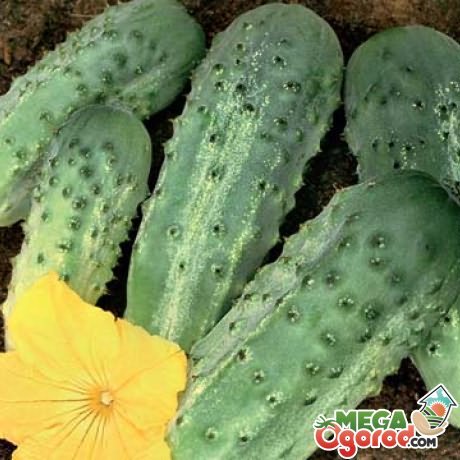
Early cucumber varieties are in great demand among gardeners. A bountiful harvest in such species is the very first. Early varieties are divided into bee pollinating and parthenocarpic. Bee pollinated varieties can not please the gardener with an abundance of harvest if during the months of May and June cold rainy weather prevailed. But parthenocarpic hybrids of open ground from early spring who were under temporary shelters will delight early Zelentsy.
The most common of these is the variety - Murom.
It is characterized by high yield and unpretentious to the conditions. You can collect the fruits on the thirtieth day after the shoot of the plant. In addition to the Muromskiy variety, early varieties such as Ekol F1, Courage F1 and many others are most popular with the population. The fruits of these varieties are great for making various summer salads and dishes that can remove hunger in hot weather.
Hybrids of the Moscow Dude variety are also ideal to grow on open beds.
Plants give early fruits, mostly pollinated by bees. Quite resistant to the manifestation of most diseases. Egg-shaped Zelentsov has light stripes. Along the length of the fruit grow to thirteen centimeters, characterized by excellent taste and high yield.
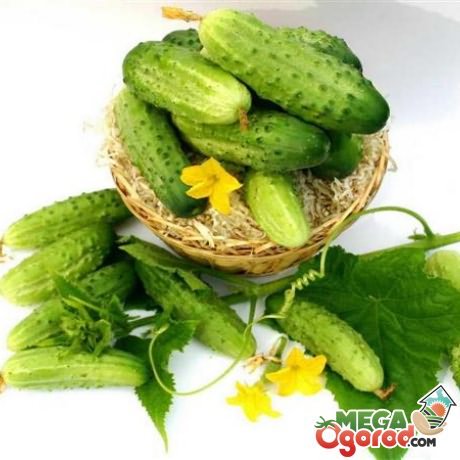
Gherkins are excellent for growing under the conditions of open beds. These are small cucumbers, very demanding on the soil composition. For them, the most favorable soil rich in calcium. Ideal for pickling including at home.
The most popular with gardeners enjoy the following gherkins:
- "Son of the F1 Regiment" - is a high-yielding hybrids used for growing in open ground. They have medium tall characteristics and light green in color. Cylindrical gherkins have a low glossy finish on the surface. Shrubs are able to bear fruit for a long time. The variety is not affected by powdery mildew.
- Cucumbers "Moth F1" have a long period of fruiting. Gherkins meek cylindrical, narrow with small grooves. On the fruit visible stripes. Bitterness is not in taste. Very resistant to adverse conditions.
- "Filipok F1" is characterized by the formation of early ripe hybrids. Suitable for growing in open beds. Fruits have a dark green color, cylindrical shape. Bright strips are visible on the surface of such gherkins. For a long time do not turn yellow. The fruit is almost not exposed to downy mildew.
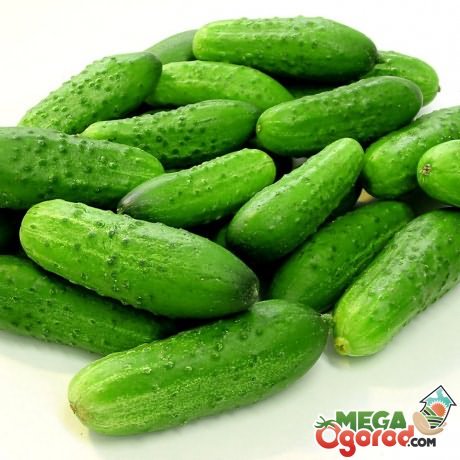
Dutch cucumber varieties recommended for cultivation in open ground conditions are especially popular with the population of our country. Before growing, amateur gardeners choose the varieties that are most suitable for growing in specific weather conditions:
- Ideal for use variety - Pioneer F1. Its fruits ripen on the fiftieth day from the emergence of shoots. The plant is resistant to cucumber disease and weather surprises.
- For canning the fruits of Baryon variety are ideal.
- Versatile in terms of the use of the variety - Marinda, has high yield properties.
- Angelina F1 is a variety of Dutch cucumbers, characterized by early terms of fruit ripening. Plants are unpretentious in growing and are able to pollinate themselves. The fruits are very juicy, in length reach fourteen centimeters. Angelina F1 cucumbers can be consumed fresh or canned. Plants of this variety have good resistance to damage by the majority of known diseases.
Among the presented variety of groups and varieties of cucumber culture, everyone will be able to choose their own plant for themselves. It is only necessary to carefully read the conditions of their growth and recommendations for use.
More information can be found in the video.
MegaOgorod.com
Types of cucumber seeds for open ground
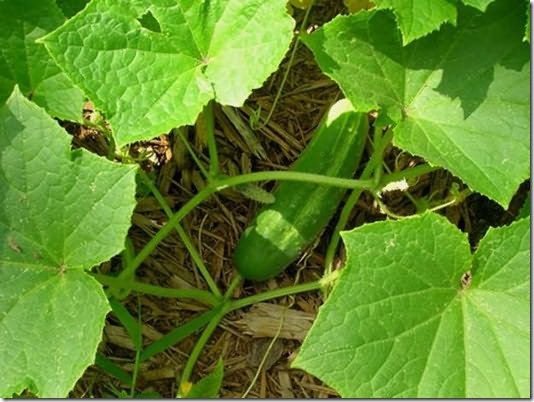
Often, when choosing cucumber varieties, we look at a beautiful package or choose the one that we just liked. At the same time we forget about the climatic conditions in which the seedlings are to grow. Or we buy seeds, regardless of where we are going to plant cucumbers: in the greenhouse or in the open ground. The result is a bad harvest, if not seed germination.
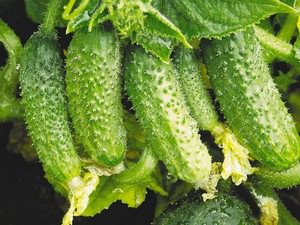
In order not to experience deep disappointment, you need to carefully read the recommendations given on the seed bag, and choose what you need: cucumbers for planting in a greenhouse or in open ground.
The middle and the end of May is the time when gardeners plant cucumbers in open ground. Harvest they get faster than from greenhouses and greenhouses. But not all cucumber seeds are suitable for open ground. In our article we will talk about the various seeds of cucumbers, which give a good harvest in the open field.
There are several types of cucumbers:
- early;
- varieties intended for salting;
- fruitful hybrids;
- f1 varieties.
Gardeners want to first give two tips:
- Choosing a variety of cucumbers, be sure to pay attention to the seeds released, which have already managed to establish themselves on the market in a positive way.
- Buying new seeds, do not take them a lot, better a small amount. Gradually, you will accumulate seeds of several types, and you yourself will be able to choose cucumbers with the best taste, with greater resistance to various diseases, and, of course, increase your harvest year after year.
Early varieties
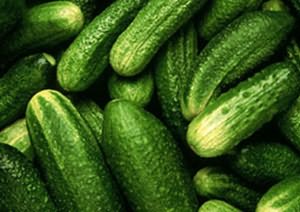
"Universal". Small-tuberous early cucumbers with excellent taste, besides giving a good harvest. These early cucumbers will perfectly enter both in three-liter and in liter jardue to its shape.
If you need cucumbers for marinating for the winter, then the “Competitor” is perfect for you - a variety of cucumbers with excellent taste. Just six weeks after the emergence of shoots, he will give you a bountiful harvest. Importantly, it does not respond to various bacterial diseases and is resistant to powdery mildew. But the "Competitor" likes nutritious and very saturated soil, otherwise the cucumbers will be bitter and not as juicy as we would like.
Crispy tuberous and small in size Cascade variety cucumbers will delight with their harvest in 50 days.
For cooking vegetable salads will be simply irreplaceable "Altai". Cucumbers are small, light green ripen in 36 days after shoots appear.
And, finally, with its graceful size and shape, gardeners will be pleased with a variety of cucumbers, which is called “Graceful”. Cucumbers are very well suited for making fresh spring salads. They practically do not turn yellow. And what else you should know, these seeds are quite suitable for growing in a greenhouse or greenhouse.
For blanks for the winter is quite early varieties will do, which we have already mentioned above. These are the seeds of the "Competitor", "Cascade" and "Universal". But an excellent result when pickling you will give "Russian taste", which is called pickling. Another variety of early cucumbers "Aquarius" is excellent for canning for the winter. If the climate is arid and the soil is dry enough, Far Eastern will be perfect, its hybrid marking 27.
Yield Hybrids
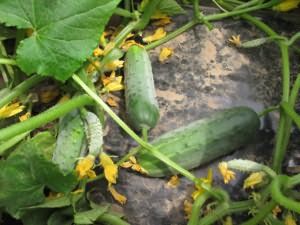
Fruitful hybrids include: Springing pollinated by bees, next to which other plants are needed for pollination, ovaries and fruiting. Seeds of the early "Zozuli", which feature is the appearance of the ovary simultaneously with flowering.
When buying seeds, the gardener's attention is often attracted by the F1 marking. This mark denotes the seeds of hybridscrossed with seeds of the first generation. Such cucumbers, of course, have many advantages. This is a great yield, great taste, it is the endurance of various temperatures and resistance to disease.
But the seeds from the hybrids of cucumber marking F1 is not recommended, as they give a wonderful harvest only the first year, and in the future you will receive empty flowers. If you are attracted to this type of cucumber seeds for open ground, then we are pleased to present to your attention several varieties, noting that the hybrids are divided into 2 types: parthenocarpic, that is, self-pollinated, and bee-pollinated.
First view no special pollination required so that the ovary appears and fruiting begins. This type of cucumber is suitable for planting in closed greenhouses. But for another, as has already become clear, the help of bees or other insects is needed. And they can be planted both in greenhouses and in open ground.
Cucumbers for open ground marking F1
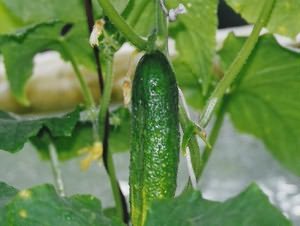
In addition to the varieties of cucumbers already listed, for winter salting very well suited the following. Early ripe seeds - "Emeli F1". This is a female type of flowering, resistant to cold. If you buy the seeds of “True Friends of F1”, you get cucumbers with weak weaving, so you can plant up to 5 plants per 1 square meter. The “Brigantine F1” also belongs to the early ripe and even early ripening. It gives a consistently high yield, but requires moderate watering.
Mid-season - this is "Antoshka F1", which is famous for its good harvest. Cucumbers are short, lumpy. Juicy and prickly fruits from the "Magnificent F1" variety. Plants weave very strongly, and cucumbers almost do not turn yellow, which is important. And if you buy the seeds of “Delicacy F1” and “Regia F1”, then even small fruits will be suitable for winter harvesting.
How to make the right choice?
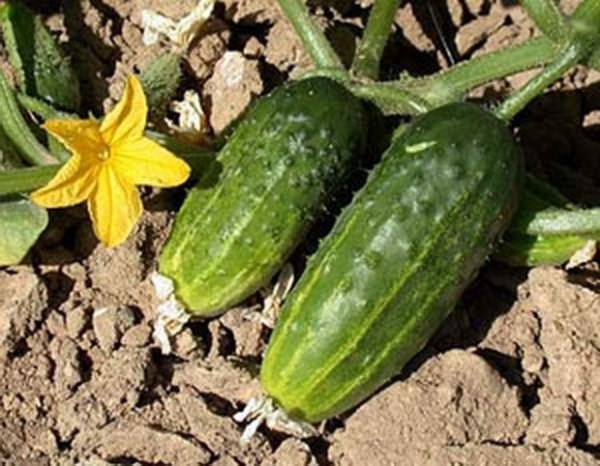
When buying cucumber seeds, it is necessary to take into account that there are female and male cucumbers. Otherwise, instead of the fruit you, to your disappointment, get empty flowers.
How to recognize and distinguish the seeds from each other? And this, it turns out, is not so difficult and the shape of a cucumber has four facets for women, and three faces for men.
In conclusion, we draw your attention to several important tips:
- If you want to get a big harvest, among different varietiesthat purchased, you must have seeds with male flowers: for example, "Movir", "Murom".
- For the preparation of salads from fresh cucumbers, the Nugget is perfect.
- After the cucumbers that hurt you just need to buy seeds such as "Vyaznikovsky 37", "Cornflower F1", "Swallow F1".
- "Farmer" boasts its versatility. Cucumbers smooth, small, with excellent taste.
Since cucumbers are early, mid-season and late-ripening, you can secure a crop throughout the season, planting different seeds on the plot.
The optimal temperature for cucumbers is not below +23 degrees, otherwise they grow more slowly, and if the temperature drops to +10, then in two days the cucumbers will fall ill and disappear. Therefore, even if you purchased cucumbers for planting in open ground, you still do not be lazy to prepare a temporary shelter for them. After all, no, even the most resistant variety, will not resist strong frosts.
We hope that the information you found in our article was useful for you. We wish you a generous harvest and enjoy your meal!
ogorod.guru
Cucumber seeds: the proper harvesting of cucumber seeds and peculiarities of cultivation
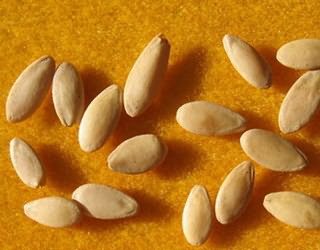
In order not to have problems with growing crops, so that all the work was not in vain, and he was high-quality and rich, you should take a responsible approach to the choice of varieties and hybrids. Is the attracted variety suitable for the conditions that will be provided to it? Very often, gardeners sow varieties that are intended for planting in a greenhouse, right in the open ground and remain disappointed. If there is no germination, do not blame the manufacturer - you should carefully study the recommendations on the bag.
The best cucumber seeds in the photo for open ground and greenhouses
Can highlight top seeds cucumbers, which will delight gardeners high-quality harvest.
For greenhouses, hybrids that do not require formation, i.e. their whips no need to pinch.
The best hybrids that are able to produce crops in the first month of fruiting are Pace and Bouquet.
Early triple hybrids:
able to give early harvests and fruiting bouquets from them - several Zelentsov from each sinus. Their advantages and the fact that they can tie fruit in poor light and at low temperatures.
The following are characterized by prolonged fruiting:
Hybrids
Hybrids for open ground:
|
|
|
|
|
Eliseevsky |
Treasure Island |
|
|
|
|
Bright |
|
|
Novgorodtsy |
Razgulyay |
Parthenocarpic can be divided into the following:
|
Spring caprice |
|
|
Bee pollinated varieties and hybrids for growing in the greenhouse:
|
|
Eurydice |
|
|
|
|
First grade |
|
Tereshka |
Borovichok |
|
For covering soil, you can choose:
Decent varieties and hybrids:
|
|
|
|
|
Tarapunka F1 |
|
Fujiyama |
|
|
F1 Grasshopper |
Kuzmich F1 |
The selection of varieties for cultivation is a responsible matter. Some are suitable for open ground, others only for greenhouses. In addition, you need to pay attention to what terrain the variety was bred for. If you make a mistake, the vegetables may not grow at all. Not many varieties are able to grow well in the south and in the north.
In the southern regions of Russia, the best varieties are:
|
Summon 238 |
Barrel F1 |
Winner |
|
|
Berendey |
F1 ant |
|
Red mullet |
Don passage |
|
|
Salty ears |
Harmonist |
Nezhinsky 12 |
|
|
|
Pickled bean |
In the Far East and Siberia:
Altai, Far Eastern 27, Vladivostok 155, Cascade, Gift of Altai, Universal, Far Eastern 6, Avant-garde 121, Kit.
In the European part of Russia, the most popular are: Altai Early 166, the Irreducible 40, Murom 36, Elegant, Vyaznikovsky 37.
In Kazakhstan, Central Asia, and Transcaucasia, besides varieties of European origin (Donskoy 175, Vyaznikovskiy 37, Nonrushable 40, Nezhinskiy 12, and others), local varieties are grown - Pervenets Uzbekistan 265, Tashkent 86, Kuylyuk 262, Uzbek 40, Margilansky 822,
In greenhouses and under the film most often grown: Altai early 166, Murom 36, Graceful, Nerosemy 40, Kharkiv 6, Vyaznikovskiy 37.
There are different types of cucumbers. They are usually divided by the method of storage or application. These are cucumbers, for pickling and for canning.
You should not grow a number of different species. In the process of growth, they are all confused with each other in the beds. If you preserve together the types that are suitable and unsuitable for this procedure, then soon the banks will have to be thrown away.
For salting use short fruits:
|
Vladimir |
|
Kharkov |
|
|
|
|
|
|
Pickling |
Competitor |
|
|
|
Shrub |
|
Far East 27 |
|
Springwell |
|
Faithful friends |
Asterix |
Reliable |
|
Barrel pickling |
Vyaznikovsky 37 |
Siberian Gherkin |
|
Great |
Mama's favorite |
Brigantine |
For pickling, vegetables are grown on the open ground and ripped off very small. These are Delicacy, Regia F1 and Leandro F1.
The best cucumbers for salad:
|
|
|
Mill |
|
|
|
Abundant |
|
Incorrigible 40 |
|
|
|
|
|
The Little Humpbacked Horse |
Universal varieties are:
|
|
|
Moravian gherkin |
|
Darling |
|
Unity |
|
Pasalimo |
Shore |
|
|
|
|
|
|
|
|
|
|
Droplet |
|
Crane |
|
|
|
|
|
|
|
Serpentine |
|
Pasamonte |
|
|
Dutch Cucumber Seeds
Dutch cucumber seeds are quite popular. They are resistant to various diseases, great for canning, not bitter. Popular hybrids Masha and Herman. Both of them give high yields. Usually they are sown at the end of March.
Growing cucumber seeds
Growing cucumber seeds has its own characteristics. This is a thermophilic culture. Seeds see the light at a temperature not lower than 12 ° C. Shoots may appear in ten days at 18 ° C. If the temperature is 25-30 ° C - then after 3-6 days. In the case when the temperature drops below 10 ° C, the seedlings turn yellow and rot. If the temperature is below 6 ° C, then a violation of physiological processes occurs.
If in the summer and early autumn too cold nights, the number of female flowers on the plant is reduced. In addition, there is a risk of the formation of ugly fruits and the development of diseases.
How to collect cucumber seeds
Not all gardeners know how to pick cucumber seeds. Harvesting cucumber seeds is a simple procedure. The main caveat - should not be collected from hybrids - they will not give the crop. The inscription F1 on the bag means that it is a hybrid.
It should take ripe fruit. They have a yellow, brown or brownish color. The fruits of the cucumber are opposite-sex. It is believed that the female fruit gives the highest yield. Male has three faces, female - four.
Ripe cucumber is cut, the seeds are separated and washed. Then, saline is poured into the enamel bowl. And put the seeds there. After a few days they are washed again and begin to dry.
They germinate a little earlier purchased, and in addition will not get sick. Ovaries on plants will not yield to anything bought. To the harvest was not bitter, should be collected from the front of the fruit.
However, there is a risk that if you put them on next yearthen a lot of barren flowers will grow. For this reason, they should be planted only after three years.
It is better to store them in paper bags. In the refrigerator or in the cellar. On the bags for convenience, you should write the year of collection and description of the merits of the variety.
udec.ru
Each person who is engaged in cultivation of garden cultures, tries to receive a qualitative harvest, to apply the best technology, to introduce a novelty. No exception are cucumbers. Among several varieties should be highlighted self-pollinating varieties cucumbers.
As practice shows, these cucumbers do not require special care. It is enough to provide them with a good air humidity regime, access of a large amount of sunlight and nutritious soil. That is why self-pollinated cucumbers more often began to be found on closed-type garden farms.
What are the self-pollinated varieties of cucumbers? The tip is in the title itself. The peculiarity of these cucumbers lies in the structure of their body - they have both a pistil (male) and a stamen (female) in one flower. The presence of such a structure implies a process of self-pollination, independently creating fruit with seeds.
Very often you can hear the question - which cucumbers are better: self-pollinated or bee-pollinated, and what is the place of parthenocarpic versus self-pollinated varieties?
It should be noted that, along with partocaprimic and pollinated, more productive are considered to be more productive. self-pollinated cucumbers. In connection with the technology of reproduction of vegetables of this type, the probability of germination and the guarantee of the appearance of fruits far exceeds other types.
Such cucumbers have different characteristics and taste, therefore, breeders have developed varieties that are good for eating in natural form (the so-called salad options), as well as special varieties for pickling and salting.
Early self-pollinated cucumbers have a gentle juicy filling, and later - more hard and dry. In the mid-season varieties a certain hardness and tenderness of taste are more balanced.
Cultivation of self-pollinated cucumbers can be organized both in greenhouses (greenhouses, greenhouses, on the windowsill, on the balcony), and in open beds.
Self-pollinating varieties of cucumbers for greenhouses
Since greenhouses are a type of greenhouse, bee access for pollination reduces to a very low probability. It is for this reason that self-pollinated cucumber varieties are chosen for greenhouses.
Some skeptics believe that greenhouse self-pollinated cucumbers do not have those qualities that have fruits grown in open ground. This is not true. I can even say more - they not only do not lose their basic properties, but also produce a greater yield several times (10: 3 ratio). What is the reason? In the greenhouse there are no negative factors (neither winds, nor cold, nor drafts), which are characteristic of open ground.
The best self-pollinated varieties of cucumbers for greenhouses:
- Matilda F1. This is an early ripe hybrid. It is characterized by a spinous, rough surface and a cylindrical view. The bush is powerful, the leaves are medium. On one ovary can grow 7 cucumbers. Weight of one fruit 110 gr. Zelentsy have a beautiful standard form (up to 10-12 cm), even. Harvest plant pleases up to 45-50 days.
- Zozulya F1. Most best cucumbers hybrids self-pollinated for closed ground. The maximum weight reaches 300 g., Length - about 25 cm. The surface of the cucumber is mostly smooth, has an excellent presentation. The shape is smooth, without bends. The first green stuff you can try after 40 days. This variety is great for canning.
- ZyatekF1. These are early cucumbers of the cornish type. The main characteristics should include their excellent juiciness and crunchy structure. Fruits are quite small (up to 10 cm.). The surface of the vegetable has a blue-white tuberous appearance. There can be up to 12 fruits on one ovary. Fruiting begins after 43-48 days. From one bush mono collect up to 7 kg. cucumbers.
- Emelya F1. Early common variety. The first crop plant will please in a month after germination. With 1m.kv. can collect 15 kg. cucumbers. The average weight of greengrass is 120 g., Length - 15 cm, has an oblong shape with a smooth surface. On the skin of cucumber there are minor tubercles. It has a high resistance to diseases. Due to its excellent taste, it can be eaten in any form.
This is not all self-pollinated varieties intended for greenhouses.
Self-pollinated varieties of open cucumbers
Today, self-pollinated varieties of open-ground cucumbers are very popular among summer residents. They must have characteristics such as resistance to temperature extremes, excessive moisture, and wind gusts. They bring more yield and provide almost 96% chance of ovary formation. The best varieties of self-pollinated cucumbers for open ground are:
- Alliance F1. Mid-season hybrid, has excellent taste. The length of a cucumber can reach 15 cm., And weight up to 125 grams. In one ovary can form up to 6 fruits. The yield per square meter reaches 17 kg. The period of fruiting comes after 50 days from disembarking to open beds. It is recommended to germinate seeds before planting. After processing, the fruits do not lose their qualities, while maintaining a crispy structure. Therefore, many gardeners choose this variety for harvesting conservation for the winter.
- Orpheus F1. This is a fairly early variety, harvest can be already at 38-42 days after sowing. From 1 m2 area you can collect up to about 7 kg. fruits. In one ovary about 5-8 cucumbers are found. The fruits themselves can reach a maximum length of 13 cm. Their weight ranges from 80 to 110 grams. Cucumbers variety Orpheus have small bumps.
- F1 enthusiasm. Early hybrid for open ground, the harvest of which can be harvested as early as 35-38 days. Outwardly, it looks like a cylindrical, large-eared gherkin. On one ovary about 5 cucumbers are formed. From 1 square. m. collect up to 6 kg. fruits. Zardor is resistant to diseases and changeable climate. Ideal for pickling, after processing it retains its elasticity and crispy structure. Zelentsy are quite small (about 10 cm), so they look great in a can.
There are many more varieties that are intended for cultivation in the open field. Each summer resident can find a suitable option for himself (Gerd's Medium Early Cucumber and Friendly Family, early varieties Muromets, Connie, Masha, and also Conrishons Opera, Alex, Melody).
Universal self-pollinated cucumber varieties
Breeders are constantly improving their development, with the result that on the counters of garden and garden stores, new varieties appear that have unique properties (Spring, German, Ant, Claudia). These varieties are universal, they are suitable for any type of cultivation (greenhouse, vegetable garden).
Herman F1. The best of them are the Hermann F grade. It belongs to the early maturing over-yield varieties of the cornish type. Cucumbers Hermann were bred by Dutch breeders. Zelentsy is very good in taste, there is absolutely no bitterness in them. These are the best self-pollinated cucumbers for pickling and salads. Fruits can reach the standard 12-centimeter size in length and up to 80-90 gr. weight. On one ovary 5-9 fruits are formed. The peculiarity of the variety is its resistance to various diseases (cucumber mosaic, cladosporiosis, powdery mildew, late blight).
glavnaya-dacha.ru
9 most productive varieties of cucumbers
Among the many existing varieties of cucumbers, each of us chooses the most suitable for us, guided by a specific set of requirements. Some want to get cucumbers as early as possible, so they plant early varieties of cucumbers. The second is more important fruit taste, the third - as long as possible term of their fruiting. But perhaps common to all and one of the main requirements is yield. That's just the most high-yielding varieties cucumbers we discuss with you today.
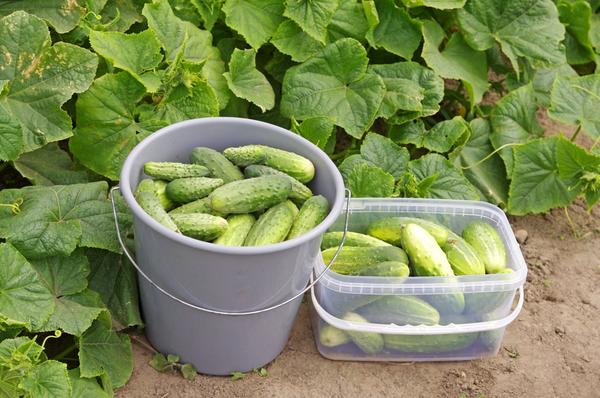
On some varieties of cucumbers, which can be safely ranked as the most productive, we have already spoken in article 25 of the earliest varieties of cucumbers. Maysky F1, Fontanel F1, Zozulya, April F1, Moscow F1 dude, Altai Early 166, Murom 36, Advance F1 - it makes no sense to re-describe the benefits of each of these varieties, so today we will remember a few more varieties that you will not grow without harvest.
Pinocchio F1
The early cucumber Buratino F1, from the emergence of which until the beginning of fruiting takes 44-46 days, is a parthenocarpic hybrid with a predominantly female type of flowering. Designed for cultivation under temporary film shelters and in open ground. Hybrid cold-resistant, high-yielding, with a bouquet located ovaries, which in the nodes contains up to 6 pieces. The fruit is a genetically devoid of bitterness, a large, dark dark green elongated-cylindrical green grass, which is 8-9 cm in length and weighs up to 100 grams. From 1 square meter receive about 11-13 kg of fruit.
F1 white night
The early ripe parthenokarpichesky hybrid intended for cultivation in an open ground and film hotbeds. It enters the phase of fruiting on days 42-44 after germination. The plant is medium branchy, with a predominantly female type of flowering. The cylindrical forms are short, not prone to yellowing, the fruits are dark green in color, white-bearded, and medium-tubercular, reaching a length of 8–9 cm. The weight of greens is approximately 80-120 grams. The hybrid is resistant to bacteriosis.
Noble F1
The noble F1 is a mid-early bee-emitting hybrid, which begins to bear fruit at 46-48 days after germination. Designed for cultivation in film greenhouses and open ground. Plants of a grade srednerosly, srednevetvisty, with mainly female type of flowering. Fruits are short light-green white-shingled, small-tucked green cylindrical Zelentsy, reaching a length of 10-13 cm, weighing 100-110 g. Productivity varieties - about 12-14 kg per 1 sq.m. The hybrid is resistant to a complex of diseases: bacteriosis, olive blotch, viral infection, anthracnose and ascohytosis.
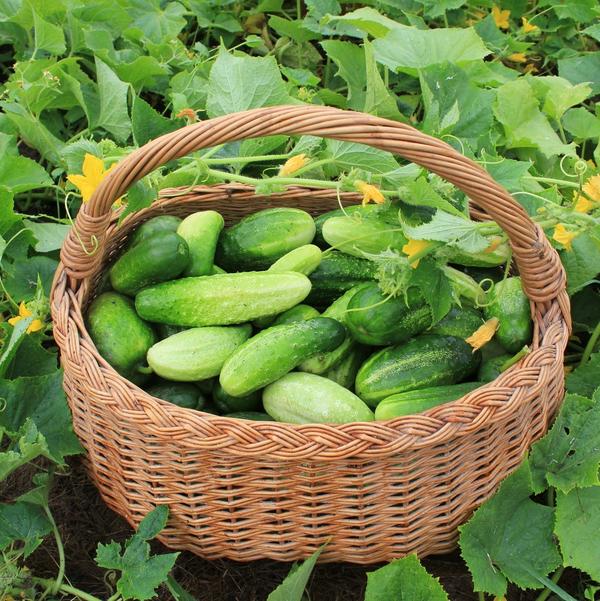
Fortress F1
The precocious bee-pollinating hybrid Krepysh F1 yields approximately 43-45 days after sprouting. Designed for cultivation in the open field. Korotnye lumpy white-topped oval Zelenitsy have a mass of 70-100 grams. About 1 kg of Zelentsov is collected from 1 square meter. The hybrid is resistant to downy and powdery mildew and cladosporia.
Emelya F1
One of the relatively few hybrids and varieties intended for cultivation in greenhouses. Parthenocarpic hybrid, early ripe - begins to bear fruit at 40-42 days after germination. Plants are medium branch and vigorous, with a predominantly female type of flowering. Spindle-shaped, green with short stripes of light color, the fruit reaches a length of 15 cm, and its weight can reach 120-150 grams. The hybrid is resistant to diseases such as cucumber mosaic and olive spot. Tolerant to powdery mildew and root rot. From 1 square meter you can collect 12-16 kg of fruit.
Dasha F1
The bee pollinating hybrid intended for cultivation in an open ground, and also under temporary film shelters. Fruiting begins at 36-46 day after emergence. Cabbage leaves are short, dark green, oblong-cylindrical in shape, large-knobby, with white pubescence. The fruit weight is about 85-115 grams, they reach 10 cm in length. The hybrid is resistant to bacteriosis, powdery mildew, and tolerant to downy powdery mildew.
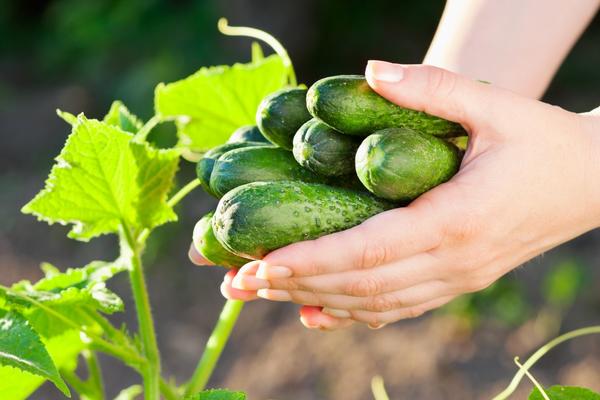
Summer resident F1
Partenokarpichesky early ripe hybrid for an open ground and temporary film shelters. Fruiting begins at 43-45 day after germination. The plant is medium branchy and medium in length, with a predominantly female type of flowering. The fruit is green, cylindrical in shape. The mass of Zelentsov reaches 70-90 grams, and from 1 square meter receive 13-14 kg of fruits.
Viva F1
Designed for growing in open ground and temporary film greenhouses. Middle-early parthenocarpic hybrid, from the emergence of shoots to the start of fruiting which passes 46-55 days. Plants can be medium- and vigorous, medium branchy, with a predominantly female type of flowering. Fruits - cylindrical green, slightly ribbed and small tuberous. At length they reach 9-10 cm, and from 1 square meter you can get about 11 kg of fruit.
F1 cellar
Early hybrid (from germination to fruiting 43-48 days), bee-pollinating, with a predominantly female type of flowering. Designed for cultivation under the film shelters. The cylindrical form, a large-tubercular buroshhipyy, green-green with white stripes, slightly narrowed at the base, is up to 9-11 cm long, and its mass reaches 90-100 g. The hybrid is resistant to the main diseases of cucumber, and from 1 square meter you can get 15-17 kg of fruit. I listed, of course, not all fruitful varieties of cucumbers, so I ask you to add me in the comments. Tell us, what varieties of cucumbers did you grow on your plot, and which of them turned out to be the most fruitful? In addition, I recommend a few more articles about cucumbers:
- Growing cucumbers: planting, care, feeding, varieties
- Cucumbers: personal experience growing tips
- 11 secrets good harvest cucumbers
Cucumber is a heat-loving plant, and no matter how strong your desire to get the fruits as early as possible, you have to put up with the fact that without keeping certain periods of planting a good harvest will not get. The only thing that can help you in this case is the use of seeds, which make it possible to get early ripe cucumbers.
Ways to get an early harvest
There are two ways to get early cucumbers:
- pre-planting seedlings;
- sowing in greenhouses ahead of time.
The first option is practiced, as a rule, by experienced summer residents, who like these events are a real pleasure, since the care of any seedlings, including cucumber, requires discipline and attentiveness on the part of the owner. In addition, you must have ample space, in order to be able to install seedling boxes in close proximity to natural light sources.
But even with all these conditions, cucumbers grown in this way very rarely meet the stated expectations. The fact is that plants, for a long time being in conditions different from the real ones, after planting in greenhouse premises or open beds are unable to resist the influence of various natural factors. Some shoots, for example, can get burned by the sun and just burn, others will not be prepared for the natural temperature of the soil, and even if the earth is properly prepared for them, the shoots will not cope with low temperatures.
In practice, you can find only a few dozen varieties of cucumbers for each region, which would be adapted to growing through seedlings. But even they should not count heavily.
The second more effective way for the early ripening of cucumbers is to plant the seeds directly in the greenhouse.
Use of greenhouses
Due to the fact that the cucumber seedlings immediately fall into real living conditions, it does not need to get used to the sun rays again, the shoots are very strong and strong. However, in this embodiment, there are some subtleties.
For early ripening of cucumbers, sowing should be carried out in a timely manner - in the second half of April.
At this time, in many regions, at best, the soil only has time to thaw, naturally, it does not make sense to plant the seeds of early varieties of cucumbers into the cold soil. Therefore, it is necessary to prepare in advance both the greenhouse and the seed material.
Improving the cold resistance of plants
You can make the shoot more resistant to cold, which is the main cause of failed early harvests, even at the preliminary preparation stage of the seed. For this use hardening procedure. Its essence comes down to the fact that the seeds that have not yet sprouted are wrapped in a damp cloth and placed in conditions with an ambient temperature of about 0 ° C (a refrigerator would be the best option for this). After 48 hours, the seeds are removed and immediately sown.
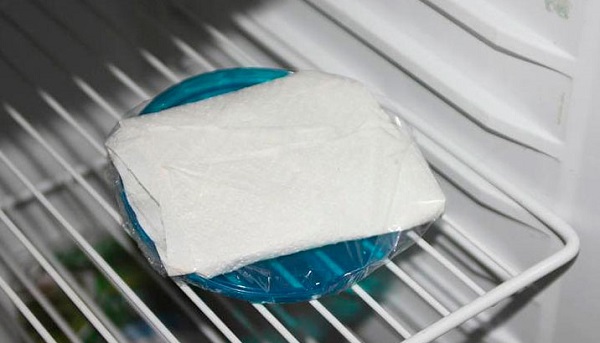
When hardening cucumber seeds, you must carefully follow the instructions. If you put them in the fridge after they have leaked, you lose the seeds; if the temperature is below 0 ° C, the result is the same.
Another effective way to secure early ripened cucumbers is to form in the garden steam (warm) ridges. Thanks to a specially prepared surface for disembarking, root system seedlings will always be warm, this is due to the decomposition of the biological mass involved in creating the beds. Since the root system of a cucumber plant is its most sensitive part, having protected the roots from the cold, it is likely that it will be possible to preserve all the seedlings.
Preliminary preparation of the greenhouse
Ultra early varieties of cucumbers require early preparation of greenhouses. The process is recommended to start in the fall. First of all, it is necessary to rid the space of the old soil completely. This must be done on a mandatory basis, if the outgoing season has not been done without fungal or bacterial infections, attached to the crops planted here. And no matter what these cultures were. If they are sick, then the soil should completely replace. In the event that the sores of your garden are over, you can get by removing only the top layer of soil. It is possible, but still undesirable.
The vacated spaces must be filled with organic residues. These can be: leaves of trees and shrubs, tops, straw, sod grass and so on.
Since it is straw that produces the greatest amount of heat in the decomposition process, it is desirable that in the total volume of its organic matter be more than half.
In early spring, the surface prepared in this way is covered with a 15-20 cm layer of snow, which, a couple of weeks after application, is covered with black film in two layers. When sunny days come, the ground under the film will actively heat up, the snow will begin to melt and soak the soil with moisture.
After a week or two, when the thawing process is completed, it is necessary to deposit in the greenhouse organic fertilizersor rather, manure. Manure is mixed with sawdust and organic matter, as well as with a layer of new soil and remnants of old. After completion of the process, all this is covered with a film for a week until full warming up.
How to choose the right grade
All varieties of cucumber seeds on the market can be grouped according to three main features: by the rate of fruit ripening, by the method of pollination and by the method of cultivation.
By deadlinesrequired for ripening:
- ultrafast varieties with a growing season of up to 40 days;
- early cucumbers with maturity up to 45 days;
- middle-ripe varieties, the first fruits of which can be obtained in 45-50 days;
- late cucumbers with a vegetative period longer than 50 days.
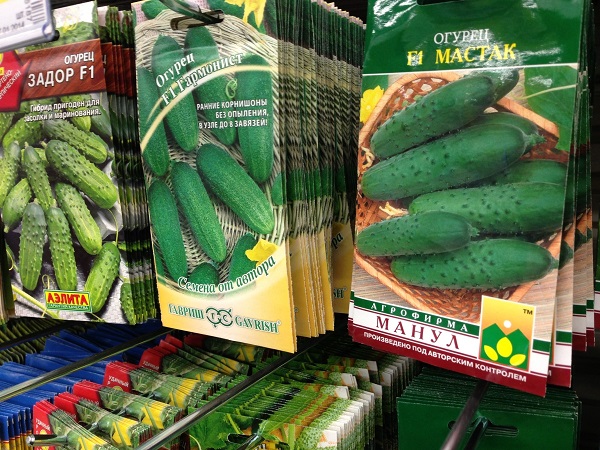
By pollination method:
- bee-pollinated;
- self pollinated;
- parthenocarpic.
With the first option, it seems, everything is clear. Such cucumber varieties require the presence of bees participating in the fertilization procedure, and therefore they are best used in greenhouses or in open beds, where bees arrive regularly.
Partenocarpic and self-pollinated cucumbers do not need bees. They differ among themselves in the fact that the former form the ovary without the presence of the very fact of pollination, and the latter contain in each flower both the stamen and the pistil, which allows them to pollinate themselves.
By growing method:
- for landing in hotbeds and in open spaces;
- for sowing in greenhouses.
This classification is very conditional, since there are enough varieties from which crops can be obtained equally successfully both outdoors and in closed spaces.
For open ground
So, the best early varieties of cucumbers for open ground include the following:
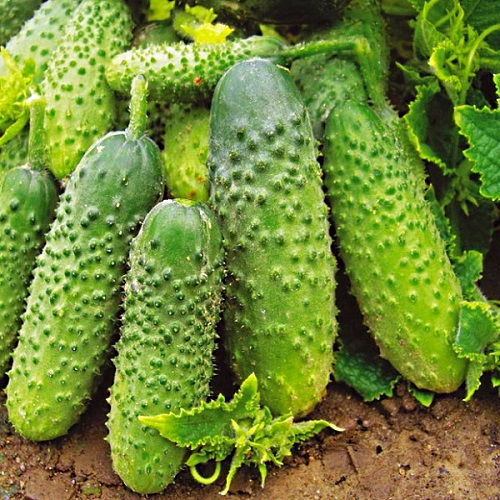
In a separate group I would like to collect varieties of early cucumbers for open ground, characterized by a high rate of generation of the first fruits:
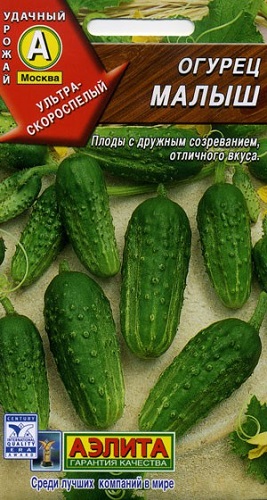
- "Levina F1";
- Masha F1;
- "Orpheus F1";
- "Son";
- "The Little Farm";
- "April F1".
For the greenhouse
Greenhouse conditions are significantly different from open spaces and require that the culture has special specific properties. One of the features of cucumber varieties for the greenhouse is the possibility of pollination without bees.
Bee pollinated varieties in the greenhouses do not place, save them for open areas.
However, it is still necessary to dilute parthenocarpic hybrids with pollinating varieties, since otherwise, with multiple flowers, ovaries will not be sufficiently formed.
Let's go over the best varieties and hybrids of cucumbers for greenhouses:
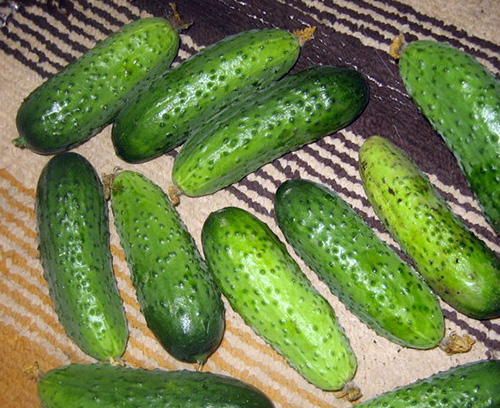
You can use these and many other early varieties to get a wonderful crop of cucumbers in a greenhouse or on the street. Regardless of the region in which you live, there will always be a way to grow this wonderful vegetable, the main thing is to show the necessary degree of discipline in complying with the rules of care. In addition, an important aspect is the right choice of varieties. Not every culture is universal, there are varieties that can produce yields only in certain climatic conditions, which are difficult and, at times, impossible to recreate by artificial means. It makes no sense to chase cucumber varieties that require incredible effort in the process of growing. It is much more correct to choose those that will bring you the pleasure of care activities and fully enjoy the results.
To print
Vyacheslav Simonov 03/28/2015 | 17470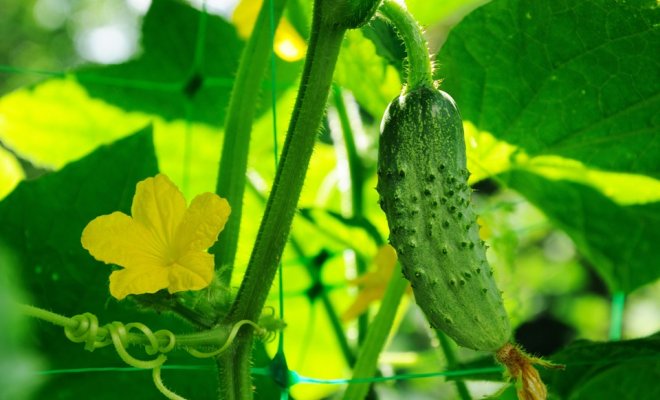
Getting the first fresh cucumbers in the open field at the beginning of the garden season will help diversify the diet with natural vitamins. Find out which varieties ripen in the earliest terms.
To grow an early crop of cucumbers on a garden bed, you should choose the appropriate varieties. In addition, they must be adapted to the region in which they will be planted. The first begin to give their crops ultra early varieties and hybrids.
What are cucumbers?
On sale you can find varietal and hybrid cucumber seeds. Their main difference is that from seeds collected from varietal fruits, plants will grow with the same characteristics, but from hybrid ones they will not. Therefore, if you want to continue to grow cucumbers from your own seeds, it is better to sow varieties, not hybrids.
On the packaging, next to the names of hybrids is always the designation F1.
First fruits early varieties and hybrids of cucumbers can be harvested approximately 42 days after germination. They together and quickly give their crops. Cucumbers are sown in May in the ground, but for an even earlier harvest, you can sow cups in April, and then plant the grown seedlings on the beds.
There are bee pollinating and self-pollinating cucumber varieties and hybrids. For bee-pollinating to set greens, sunny warm weather and friendly bees are required. For self-pollinating (they are also called parthenocarpic), these conditions are not so important. Such cucumbers can be kept under temporary shelter in case of adverse weather and this will not affect the yield.
In order for the plants to bear fruit well, they must be watered often (in 3-4 days) and in a day or two they should pick fruit. A rare collection of Zelentsov will lead to the fact that they no longer tied up, and the whips will quickly finish their growing season and wither.
Ultra early (or superearly) varieties of cucumbers used for making salads or pickling.
The most popular varieties and hybrids
Superearly Cucumbers are good because, forming a ovary in a short time, do not give fruit with bitterness. We invite you to get acquainted with varieties that have very early ripening.
Kid - superearly bee-pollinating variety, the first fruits are harvested 30-40 days after germination. They do not have bitterness and are not prone to yellowing. The variety is suitable for open ground, the fruits are well preserved for up to 10 days, universal purpose.
Parade - first cucumbers harvested 40 days after germination. Fruits without bitterness, go to the salad. The plant is demanding to heat and humidity, loves fertilized soil.
Altaic - the first fruits can be collected 40 days after germination. Salad grade with light green fruits of the small size. Cold resistant, not afraid of fungal diseases.
Masha F1 - A hybrid with a bunch-type ovary, parthenocarpic. After 38-45 days after emergence of shoots, the first fruits of small size are fastened (gherkins). They are suitable for both fresh use and for salting. The hybrid is resistant to diseases and adverse weather conditions.
F1 ant - a very early hybrid, in terms of fruiting coincides with Masha F1, parthenokarpik. The fruits are cylindrical with large tubercles, up to 12 cm long. The plants are resistant to diseases.
Hector F1 - bee-pollinating hybrid bush type. Fruits of a dark green color with dense pulp, are not inclined to yellowing. Are used for salting or fresh, long retain commercial quality. The hybrid is resistant to viral diseases, it does not harm short-term cooling.
Cupid F1 - hybrid dutch selection cornish type. Forms the ovary of 6-7 fruits that ripen together and do not have bitterness. Diseases weakly affected, suitable for salads and canning.
Anzor F1 - ultra early hybrid, parthenocarpic. Zelentsy smooth, dark green, with a thin skin, do not have bitterness. In one brush tied up to 4 cucumbers. Fruits of the gherkin type, do not turn yellow, are well transported. Suitable for pickling, pickling, fresh consumption. Plants withstand stressful weather conditions.
Merengue F1 - Parthenocarpic hybrid of early early maturity. Fruits are even, cylindrical, without bitterness, dark green color. Recommended for canning and cooking salads.
To print
Read today
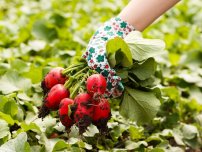
Calendar of works Cultivation of autumn radish - we plant and get a crop without hassle
Often gardeners believe that the most delicious radish is obtained only after spring planting. But this is not always the case, because ...

